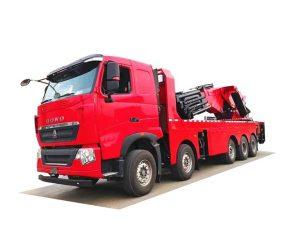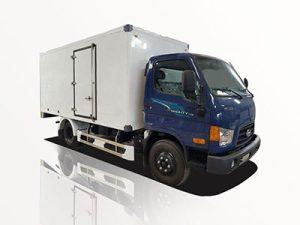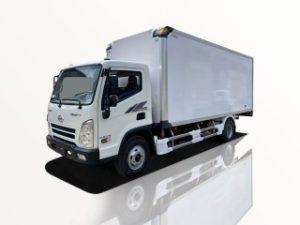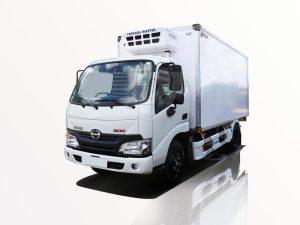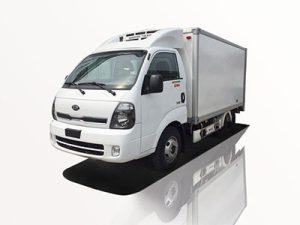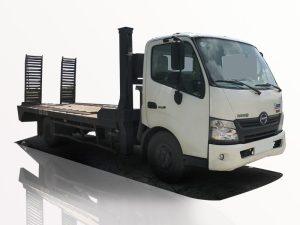Monday to Saturday - 8:00 -17:30
Tanker Truck Capacity: Understanding the Essentials for Efficient Transport
Tanker trucks are crucial for transporting liquids like fuel, chemicals, and food products. Understanding tanker truck capacity is vital for businesses and individuals involved in logistics and transportation. In this article, we will explore the different types of tanker trucks, their capacities, regulations affecting them, and tips for optimizing their usage.
1. Overview of Tanker Trucks
1.1 What is a Tanker Truck?
A tanker truck is a specialized vehicle designed to transport liquids in bulk. They come in various sizes and configurations to suit different types of liquids, ranging from water and chemicals to petroleum products.
1.2 Types of Tanker Trucks
There are several types of tanker trucks, each designed for specific purposes:
- Chemical Tankers: Used for transporting hazardous liquids.
- Fuel Tankers: Specifically designed for carrying gasoline, diesel, and other fuels.
- Food Tankers: Used for transporting edible liquids, such as milk or juice.
- Water Tankers: Focused on transporting potable or non-potable water.
2. Tanker Truck Capacity Explained
2.1 What Determines Tanker Capacity?
The capacity of a tanker truck depends on multiple factors, including:
- The dimensions of the tank.
- The material used for the tank.
- Regulations regarding weight limits.
2.2 Standard Capacities of Various Tanker Trucks
Tanker trucks come in several standard capacities that are commonly used in the industry:
| Type of Tanker | Typical Capacity (Gallons) |
|---|---|
| Chemical Tanker | 3,000 – 7,000 |
| Fuel Tanker | 6,000 – 10,000 |
| Food Tanker | 5,000 – 8,000 |
| Water Tanker | 3,000 – 6,000 |
3. Legal Regulations Impacting Tanker Capacity
3.1 Federal Regulations
In many countries, such as the United States, federal regulations set weight and capacity limits for tanker trucks. These laws ensure safety on roads and prevent overloading.
3.2 State and Local Regulations
In addition to federal regulations, individual states may have their own rules regarding tanker capacities. It’s crucial for drivers and companies to be aware of and comply with these regulations to avoid fines and accidents.
4. Calculating Tanker Capacity
4.1 How to Measure Tanker Capacity
Measuring the capacity of a tanker involves calculating the volume of the tank. For cylindrical tanks, the formula to calculate total capacity is:
Volume = π × (radius²) × height
4.2 Practical Example
If a tanker truck has a diameter of 3 feet and a height of 12 feet, its radius is 1.5 feet. The capacity calculation would be:
Volume = π × (1.5²) × 12 = 63.62 cubic feet. To convert this into gallons (1 cubic foot = 7.48 gallons), we multiply:
63.62 × 7.48 = Approximately 475 gallons.
5. Factors Influencing Tanker Efficiency
5.1 Load Distribution
Proper load distribution within the tanker is critical for safe transportation. Uneven weight can lead to instability and increased risk of accidents.
5.2 Maintenance and Inspection
Regular maintenance of tanker trucks ensures they operate efficiently and safely. Inspections should focus on:
- Tank integrity.
- Pumping and discharge systems.
- Braking systems.
6. Best Practices for Using Tanker Trucks
6.1 Training Drivers
It is essential to have qualified and well-trained drivers who understand the unique challenges of driving tanker trucks, including handling liquids.
6.2 Route Planning
Efficient route planning can minimize fuel consumption and reduce operational costs. It’s important to consider traffic conditions, road types, and weight restrictions.
6.3 Emergency Preparedness
Having a plan in place for emergencies can save lives and prevent accidents. This should include:
- Training on how to respond to spills.
- Equipment for containment and cleanup.
7. Common Challenges in Tanker Transportation
7.1 Environmental Concerns
The transportation of hazardous materials creates environmental risks. Companies must be proactive in managing potential spills and leaks.
7.2 Market Fluctuations
Changes in supply and demand can affect the logistics of transporting various bulk liquids. Managing inventory effectively is crucial.
8. Technological Innovations in Tanker Trucks
8.1 Advanced Tracking Systems
GPS and telemetry technologies allow for real-time tracking of tanker trucks, improving route efficiency and reducing theft.
8.2 Enhanced Safety Features
New safety technologies, such as automatic braking systems and stability control, are becoming standard in modern tanker trucks, helping to prevent accidents.
9. Future Trends in Tanker Transportation
9.1 Electric and Hybrid Tanker Trucks
The push for sustainable transportation solutions is leading to the development of electric and hybrid tanker trucks, which could revolutionize the industry.
9.2 Automation and Driverless Technology
The transport sector is exploring automation, which may include driverless tanker trucks in the future, presenting both opportunities and challenges.
10. Frequently Asked Questions
10.1 What is the average tanker truck capacity?
The average capacity varies greatly depending on the type of tanker, but typically ranges from 3,000 to 10,000 gallons.
10.2 How do I choose the right tanker truck for my needs?
Consider the type of liquid you are transporting, the required capacity, and any specific regulatory guidelines relevant to your industry.
10.3 Are there weight limits for tanker trucks?
Yes, there are strict weight limits that vary by state and country to enhance road safety.
10.4 What maintenance is required for tanker trucks?
Regular inspections, maintenance of the pump systems, and checking for leaks are essential to ensure safety and efficiency.
10.5 How does weather affect tanker transportation?
Weather conditions can significantly affect driving conditions. Proper planning and precautionary measures should be taken during adverse weather.
10.6 What are the best practices for loading and unloading tankers?
Always adhere to safety guidelines, ensure proper seals are in place, and use the correct equipment to prevent spills during loading and unloading.


